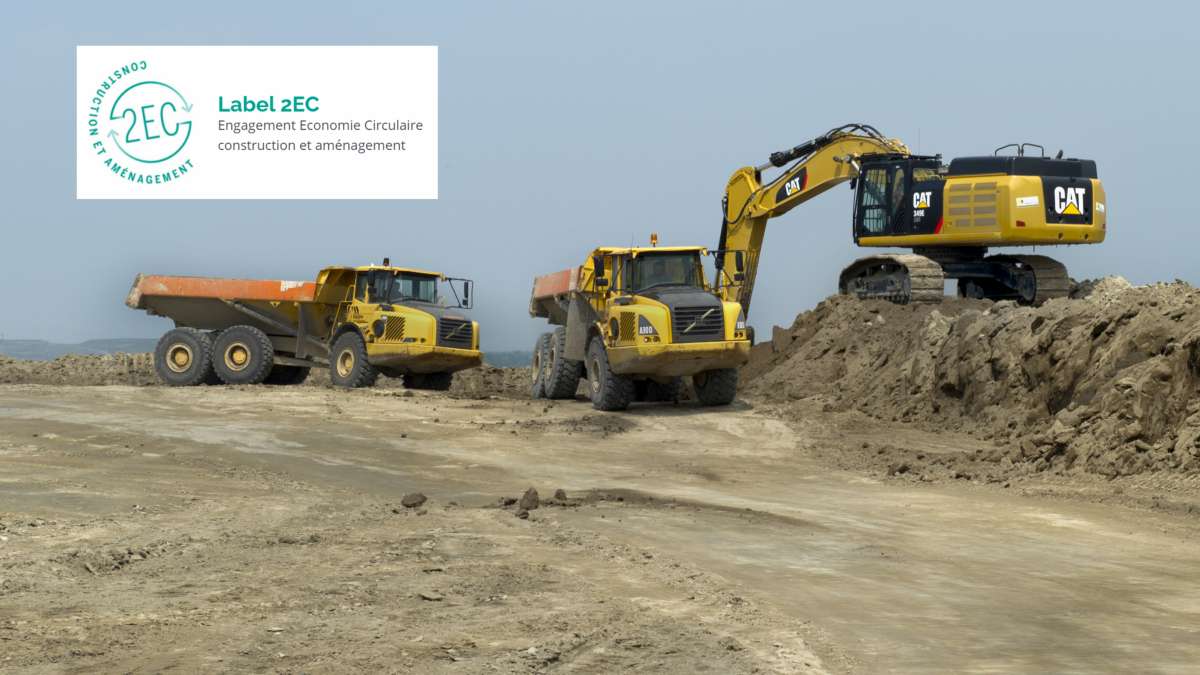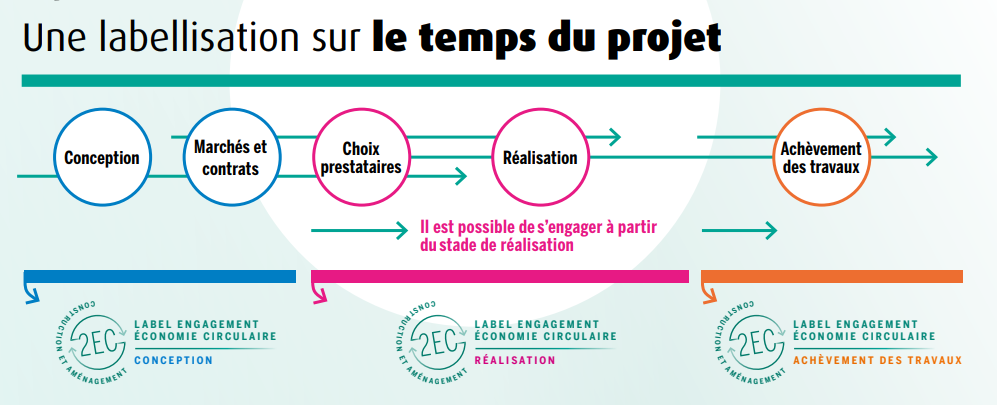This article is part of the folder : Economie circulaire dans les chantiers du BTP: Le dossier sur le Label 2EC
See the 10 news related to this folder
Objective: to highlight projects integrating circular economy issues. This label allows the skill improvement of all stakeholders in the prevention and management of waste from construction sites, along with the recovery of alternative materials.
In the construction sector, waste reuse and recovery is part of a circular economy approach. 
Their implementation at the regional level reduces the consumption of non-renewable raw materials and energy, while controlling impacts on human health and without harming the environment.
The dynamic generated by this label must also promote the skill improvement of all construction and development stakeholders in the management and prevention of waste from construction sites.
Preventing waste production and promoting best practices
Initiated by the Ministry of Ecological Transition, the 2EC label is aimed at public or private project carriers wishing to implement a circular economy in their construction and development projects. It offers a rigorous framework and promotes their approach as well as that of all project contributors, prime contractors, or construction companies.
The 2EC label was developed by a working group representing the construction industry: DRIEE, FNTP, the Seine-Maritime Department, Syntec Engineering, Greater Lyon, UNEV, FEDEREC, the Enckell avocats practice, SEDDRE and the Société du Grand Paris.
It is led by Cerema, which has organised local cells to provide proximity support to project carriers and which also provides national coordination of the various approaches to ensure the harmonisation of the 2EC label.
The methodology on which the development of alternative materials is based has been developed at the national level for road construction by working groups involving professionals from the various waste production and usage sectors (non-hazardous waste incineration clinker, iron and steel slag, BTP deconstruction materials, thermal power plant ash, foundry sand, excavated land, dredging sediments, etc.) and Cerema, to set standards and processes for the recovery of these alternative materials.
This method is currently expanding to include all developments, marine and river works and construction products. These methods and benchmarks validated by the Ministry of the environment, are available on the 2EC label website to support the recovery of waste in the context of environmental and health provisions.
All information on the 2EC label website (in French):
The 3 steps in the process:
A project can be submitted for 2EC label from the Design or Implementation stage.
The labelling process is carried out in three stages, each validated by a label:
1. At the design stage
For the upstream phase of the project: the project carrier informs and signs the 2EC label commitment.
2. At the implementation stage
The label pertains to the correct application to the markets of the project carrier's commitments, and is supplemented by site audits.
3. At the completion stage
A final label corresponds to the completion of the labelling work, confirming the successful implementation of the commitments.
At the end of the process, the companies and the prime contractor who contributed to the process obtain a certificate endorsing their professional ability to carry out a 2EC-labelled project.
Project carriers that commit to labelling sign a charter of commitment specific to the 2EC label and are monitored over the duration of the project by Cerema specialists who issue the labels at each stage by examining the documents provided by the project owner and by conducting site audits.
By committing to the process, project carriers also join a community of construction and development stakeholders who want to contribute to projects in line with the ambitions of the ecological transition.

Developing a community of stakeholders
To obtain the 2EC label in a project or part of a construction or development project, at least one of the following conditions must be met:
-
The project recovers alternative materials,
-
Waste production must be avoided and its management integrated into the project. For example, the charter requires the establishment of a projected diagnosis of design waste, the implementation of its traceability and the prioritisation of design waste reuse on-site.
The labelling process is based on the platform www.label-2ec.fr where it is possible:
-
to file the application for labelling,
-
to share practices and discover others,
-
to access technical and regulatory resources, feedback, etc.
Learn more
In the folder : Economie circulaire dans les chantiers du BTP: Le dossier sur le Label 2EC

